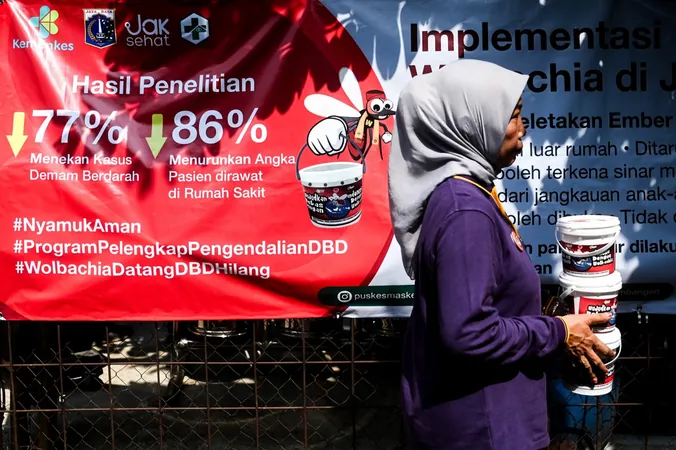
Unraveling RSV: New Research Reveals Secrets Behind Severe Cases
2024-10-12
Author: Jia
Understanding RSV and Its Impact
Respiratory syncytial virus (RSV) continues to be the leading cause of hospitalization in young children, frequently resulting in severe respiratory issues such as bronchiolitis and pneumonia. The enigmatic nature of RSV raises crucial questions: Why do some children develop only mild symptoms while others suffer from critical illness?
Recent Research Findings
Recent research conducted by clinician-scientists at Brigham and Women's Hospital and Boston Children's Hospital sheds light on this pressing issue. By analyzing airway and blood samples from patients, the team discovered significant changes in immune cell behavior, particularly an increase in natural killer (NK) cells in the airways of children facing severe RSV cases.
Potential Therapeutic Targets
This pivotal study published in Science Translational Medicine aims to uncover the biological underpinnings of severe RSV illness, potentially paving the way for novel therapeutic targets. Dr. Melody G. Duvall, a physician and researcher at Brigham and Women’s Hospital, shared her motivation: “As a physician, I help to care for children who have the most severe symptoms, and as a researcher, I'm driven to understand why they become so sick.”
Role of Natural Killer Cells
Natural killer cells act as the body's first line of defense during viral infections, but their increased presence can also lead to detrimental lung inflammation. This research aligns with findings from COVID-19 studies that identified a similar pattern, where patients with severe symptoms exhibited elevated NK cells, indicating a possible connection between these immune cells and serious viral illnesses.
Investigation Insights
The investigation involved samples from 47 critically ill children, revealing that those with severe RSV infections exhibited higher NK cell levels in their airways but lower levels in their blood. Furthermore, the NK cells in the sick children displayed alterations in both form and function, impairing their ability to fight off infections effectively.
RSV Trends Post-Pandemic
The researchers also noted an alarming trend: a surge in pediatric RSV infections in the wake of the COVID-19 pandemic. Currently, treatment options for critically ill children are limited to supportive care, but there is hope on the horizon with newly developed vaccines aimed at preventing RSV. These vaccines are approved for use in children aged 19 months and under, adults over 60, and pregnant individuals, which could significantly reduce the burden of this viral threat.
Collaborative Research Efforts
The multi-disciplinary team behind this research also includes notable contributors from various divisions, highlighting the collaborative effort to combat RSV.
Conclusion
As RSV continues to pose a serious threat to infants and young children, this groundbreaking study not only enhances our understanding of the virus but also underscores the need for effective prevention strategies and innovative treatments. With ongoing research, we move closer to protecting our most vulnerable populations from the dangers of RSV.





 Brasil (PT)
Brasil (PT)
 Canada (EN)
Canada (EN)
 Chile (ES)
Chile (ES)
 España (ES)
España (ES)
 France (FR)
France (FR)
 Hong Kong (EN)
Hong Kong (EN)
 Italia (IT)
Italia (IT)
 日本 (JA)
日本 (JA)
 Magyarország (HU)
Magyarország (HU)
 Norge (NO)
Norge (NO)
 Polska (PL)
Polska (PL)
 Schweiz (DE)
Schweiz (DE)
 Singapore (EN)
Singapore (EN)
 Sverige (SV)
Sverige (SV)
 Suomi (FI)
Suomi (FI)
 Türkiye (TR)
Türkiye (TR)